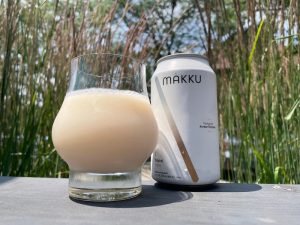|
Not only does every region in the world have its own unique cooking, nearly all have their special style of beverage as well. We know many—regional wines in France, pale ales in parts of England, mezcals in Mexico, lightly fermented ciders in northern Spain and New England, and the list goes on. If you’re looking to expand on your list of great drinks to dive into, come by Miss Kim to try out these traditional Makgeolli that Ji Hye is now offering.
Here’s a bit of what Ji Hye has to say on this tasty subject:
One of my favorite tidbits I find while looking into culinary history is about how much my Korean ancestors enjoyed good food and drink. Like a comment from this sort of travel book Koryo Dogyung 고려도경 (“Pictures and Maps of Korea”) written by a Song Chinese dignitary visiting the Koryo Kingdom in 1123 A.D. that noted, “Korean people generally like to drink!” So, to celebrate them, I want to take a deep dive into major Korean drinks every week for July. To kick that off, we have to start with Makgeolli.
The name first—“mak” means “roughly” and “geolli” means “filtered.” It has a series of other names it can go by, like takjoo 탁주 for being cloudy (instead of clear), baekjoo 백주 for being white in color, nongjoo 농주 for being enjoyed by the workers during farming, hyangjoo 향주 for being enjoyed by the regular folks in the countryside. So, we know that this is a roughly filtered, white, and cloudy brew that has been enjoyed by everyday people, especially in the farming countryside. The origin of makgeolli probably coincides with the farming of rice; traditionally makgeolli is made with just three ingredients: rice, water, and nuruk—the fermentation starter. Nuruk is a sort of a cooked grain cake that is left to ferment and grow microorganisms and yeast. It breaks down the sugars in rice and turns them into alcohol. Generally, it is easy enough to make at home and the whole process takes as short as 10 days. Hence it was and still is widely consumed by everyday folks.
During the 20th century, the tradition of making makgeolli was almost lost, as the Japanese occupation-government made it illegal for people to produce makgeolli at home and taxed alcohol production heavily. During the 1960s, following the Korean War, the use of rice was banned for alcohol production as Korea was recovering from the war and a shortage of rice. It is only after the late 1990s and 2000s that the traditional recipes and methods of making makgeolli were revived, and by the 2010s, makgeolli started gaining popularity once again.
Our favorite makgeolli is made by a Korean American company Makku. It is just about 6% alcohol, as makgeolli should be, and it has a wonderfully light effervescence, creamy body, and just a hint of sweetness. It does very well with most food that pairs with beer. Think Korean fried chicken, or even pizza. I do hope you’ll come in and try some with your next dinner.
Of late, makgeolli is getting attention that is long overdue here in the States. It’s been written up in the Wall Street Journal, Food 52, and has appeared on CNN. Come by Miss Kim and enjoy a glass of what one set of New York writers called, “Korea’s oldest alcoholic drink and—in our opinion—the most delicious.”
Make a toast to history at Miss Kim!
|


Zingerman’s Art for Sale